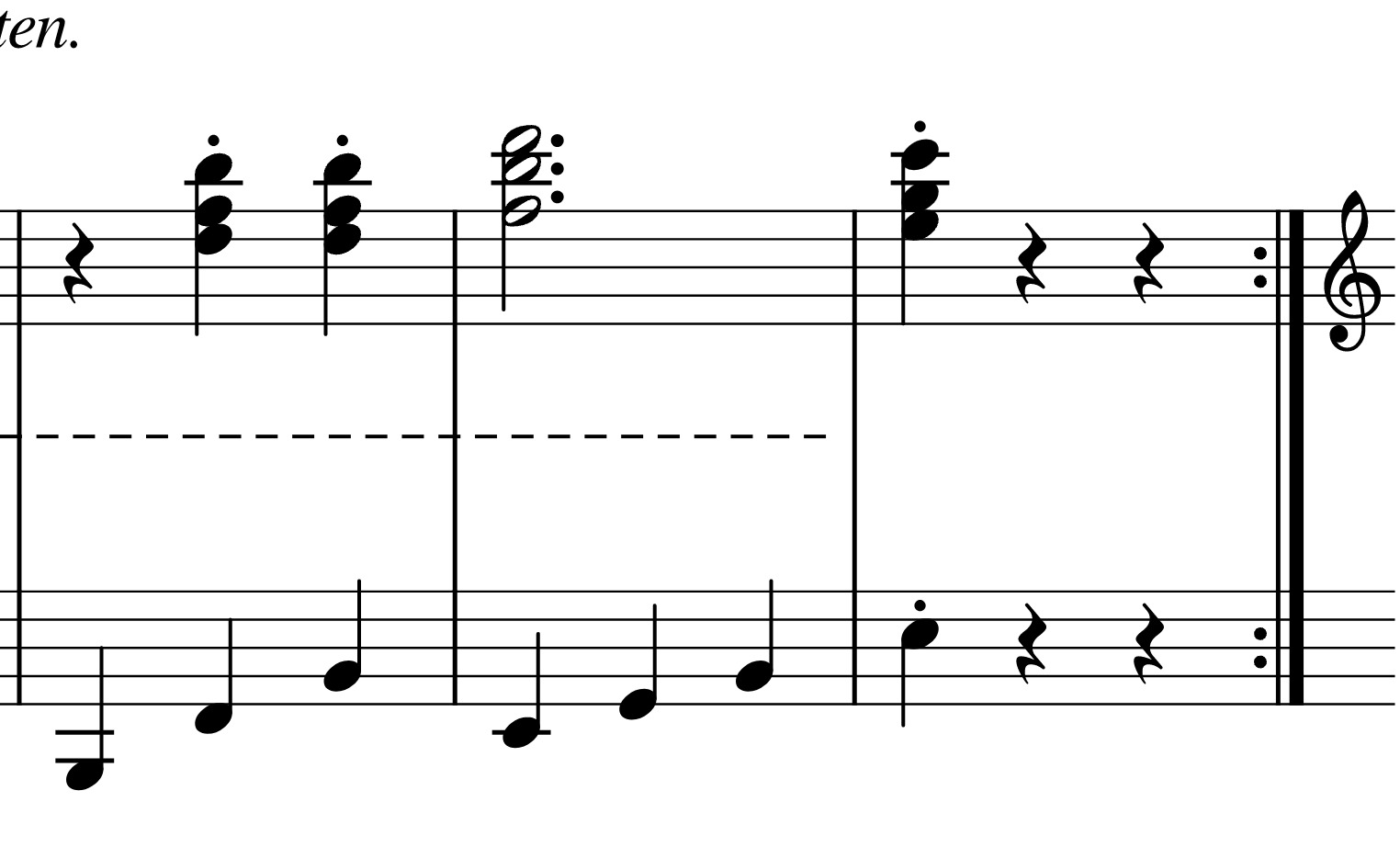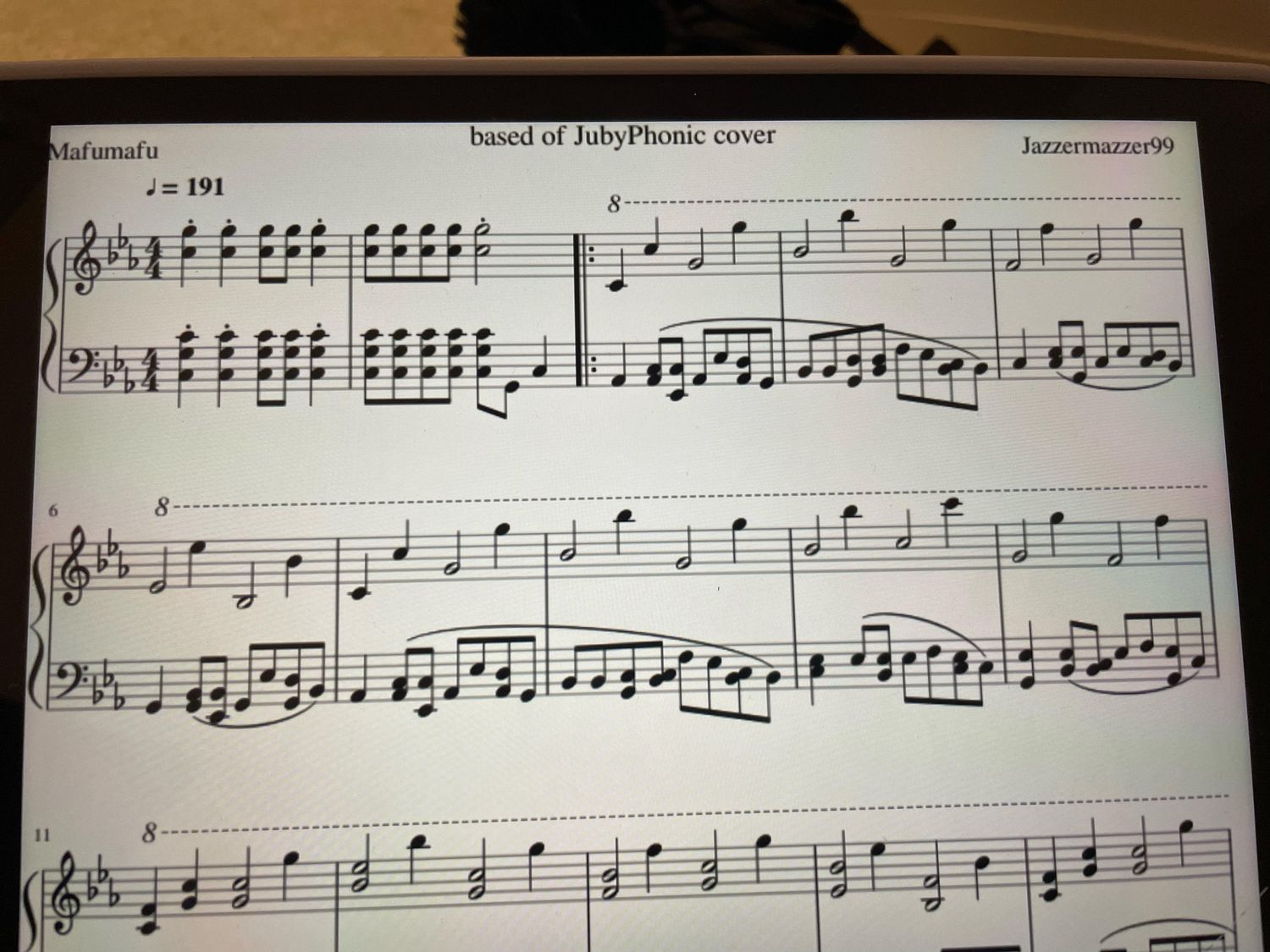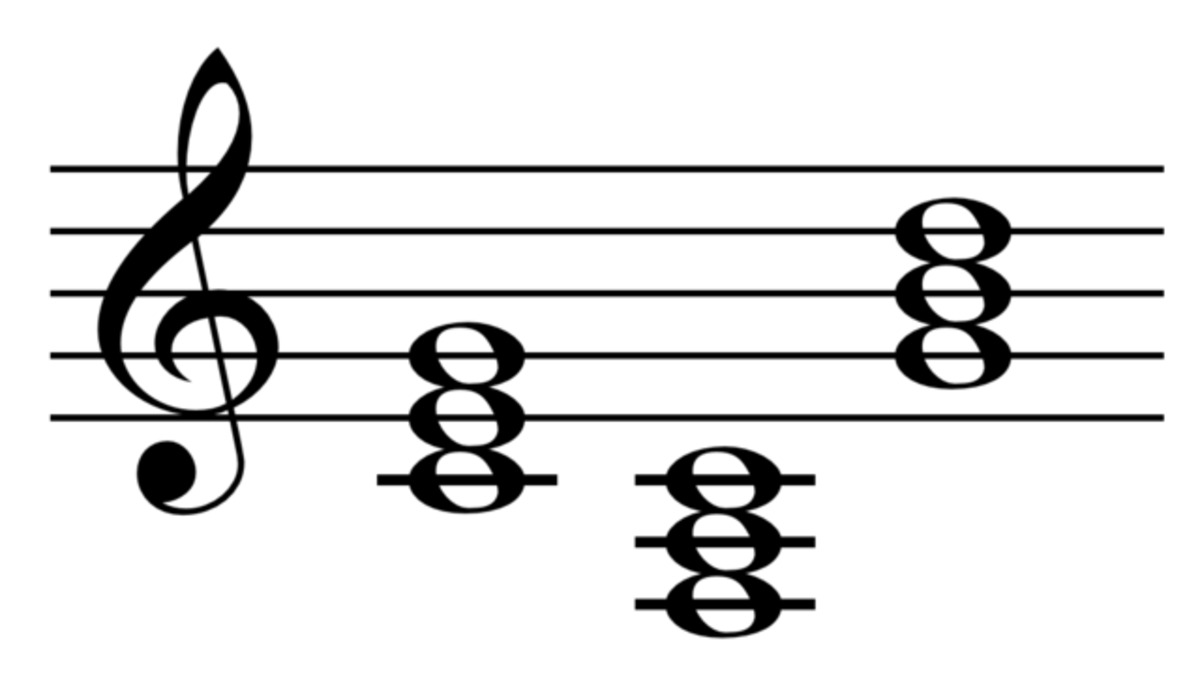Home>Production & Technology>Music Theory>What Is Fusion In Music Theory


Music Theory
What Is Fusion In Music Theory
Published: January 31, 2024
Learn about fusion in music theory and how it blends different genres and styles together. Discover the principles of fusion and its applications in modern music.
(Many of the links in this article redirect to a specific reviewed product. Your purchase of these products through affiliate links helps to generate commission for AudioLover.com, at no extra cost. Learn more)
Table of Contents
Introduction
Welcome to the fascinating world of music theory! In this article, we will delve into the concept of fusion in music theory and explore its various aspects. Fusion, in the musical context, refers to the blending of different genres, styles, and cultural influences to create a unique and eclectic sound.
Music has always been a form of expression, and throughout history, musicians have sought to push the boundaries and break the traditional molds. Fusion represents a culmination of this pursuit, where artists skillfully combine elements from various genres such as jazz, rock, classical, world music, and more.
The development of fusion in music theory has paved the way for remarkable creativity and innovation in the field of music. It has expanded the horizons of composition, performance, and improvisation, giving birth to new genres and opening up exciting avenues for musicians and listeners alike.
In this article, we will explore the definition of fusion in music theory, delve into its historical development, and examine the characteristics that define fusion music. We will also touch upon the influence of fusion on other musical genres and highlight some famous fusion musicians who have made significant contributions to the genre.
So, whether you are a music enthusiast, a musician, or just curious about the world of music theory, join us on this melodious journey as we uncover the captivating world of fusion music!
Definition of Fusion in Music Theory
In music theory, fusion can be defined as the amalgamation of different musical styles and genres to create a distinctive and cohesive sound. It involves blending elements from various traditions, such as jazz, rock, funk, classical, and ethnic music, to create a unique fusion of musical ideas.
Fusion music is characterized by its innovative approach, where artists strive to break away from traditional structures and incorporate elements from different genres to create something entirely new. It is not limited to a specific style or set of rules, allowing for freedom of expression and experimentation.
At its core, fusion represents a fusion of cultures, traditions, and musical languages. It embraces diversity and aims to create a musical landscape that transcends boundaries and resonates with audiences from different backgrounds.
One of the key features of fusion music is the integration of improvisation. Musicians often engage in extended solos and improvisational interplay, allowing for spontaneous creativity and showcasing their technical prowess.
Furthermore, fusion music often incorporates complex harmonic structures, intricate rhythms, and elaborate melodies. It can seamlessly fuse together elements of complex jazz harmonies with the raw energy of rock or the rhythmic grooves of funk.
It is worth mentioning that fusion music is not limited to a specific time period. It has evolved and continues to evolve over time, with each generation of musicians adding their own unique contributions to the genre.
In summary, fusion in music theory is the art of combining different genres, styles, and musical influences to create a distinct and dynamic sound. It celebrates diversity, fosters innovation, and provides a platform for musicians to push boundaries and explore new musical horizons.
Historical Development of Fusion
The historical development of fusion music can be traced back to the mid-20th century when artists began to experiment with blending different musical styles. While fusion as a genre gained significant popularity in the 1970s and 1980s, its roots can be found in earlier musical movements.
One of the earliest influences on fusion music was the emergence of bebop and its subsequent developments in the 1940s and 1950s. Bebop, with its complex harmonies and improvisational nature, laid the groundwork for musicians to explore new possibilities in combining different elements of jazz and other genres.
Another pivotal moment in the development of fusion came in the 1960s with the rise of the “free jazz” movement. Artists like Ornette Coleman and John Coltrane pushed the boundaries of traditional jazz, incorporating elements of avant-garde, African rhythms, and Eastern influences into their music.
However, it was in the 1970s that fusion music truly came into its own. Musicians like Miles Davis, Chick Corea, and Weather Report began experimenting with blending jazz, rock, funk, and electronic elements. Miles Davis’ groundbreaking album “Bitches Brew” in 1970 is often considered a landmark moment in the fusion genre.
In the 1980s, fusion continued to evolve, incorporating elements of world music, hip-hop, and electronic music. Artists like Pat Metheny, Herbie Hancock, and Marcus Miller further pushed the boundaries, creating a fusion of styles that captivated audiences worldwide.
Since then, fusion music has continued to evolve and diversify, incorporating elements from various genres and cultural traditions. Today, fusion artists draw inspiration from jazz, rock, classical, electronic music, and world music to create their unique sonic landscapes.
Furthermore, fusion has also influenced other musical genres. Elements of fusion can be found in contemporary jazz, progressive rock, and even popular music genres like pop and R&B. The influence of fusion can be seen in the use of complex harmonies, intricate rhythms, and improvisation in these genres.
Overall, the historical development of fusion music is a testament to the ever-evolving nature of music. It showcases the creativity and innovation of musicians who continuously strive to blur the lines between genres and create something truly extraordinary.
Characteristics of Fusion Music
Fusion music is characterized by a distinctive set of features that set it apart from other genres. These characteristics combine to create a unique and dynamic sound that captivates listeners. Let’s explore some of the key characteristics of fusion music:
- Blending of genres: Fusion music actively combines elements from different musical genres such as jazz, rock, funk, classical, and world music. It seamlessly merges diverse musical styles to create a cohesive whole.
- Complex harmonic structures: Fusion music often incorporates intricate and advanced harmonic progressions. Musicians explore complex jazz harmonies, modal interchange, and extended chords to create rich and textured sounds.
- Use of improvisation: Improvisation plays a significant role in fusion music. Musicians often engage in extended solos and spontaneous interplay, showcasing their technical skill and creativity. Improvisation allows for exploration and expression, adding an element of excitement and unpredictability to the music.
- Rhythmic complexity: Fusion music boasts intricate and diverse rhythmic patterns. It combines elements of different rhythmic traditions, such as syncopation from jazz, polyrhythms, and grooves from funk, and intricate time signatures. The rhythmic complexity adds depth and energy to the music.
- Integration of electronic instruments and technology: Fusion music frequently employs electronic instruments, synthesizers, and effects. The use of technology allows musicians to experiment with new sounds, textures, and production techniques, pushing the boundaries of traditional instrumentation.
- Emphasis on virtuosity: Fusion music often showcases the technical prowess of musicians. Instrumentalists are known for their mastery of their respective instruments, displaying their agility, speed, and improvisational skills through intricate and demanding solos.
- Cultural fusion: Fusion music celebrates diversity and cultural exchange. It incorporates elements from different musical traditions, embracing global influences and creating a multicultural sonic experience.
These characteristics work in harmony to create a dynamic, genre-defying sound that is uniquely fusion. The fusion genre continues to evolve and adapt, with contemporary artists pushing the boundaries and incorporating new influences.
Whether you are captivated by the intricate harmonies, complex rhythms, or the electrifying improvisation, fusion music offers a captivating and immersive musical experience that transcends traditional genre boundaries.
Fusion Genres and Styles
The concept of fusion in music theory has given rise to a multitude of fusion genres and styles, each showcasing unique combinations of musical elements. These genres and styles, with their distinct characteristics, have pushed the boundaries of traditional music and expanded the sonic landscape. Let’s explore some notable fusion genres:
- Jazz Fusion: Also known as jazz-rock fusion, this genre emerged in the late 1960s and 1970s. Jazz fusion blends elements of jazz improvisation and complex harmonies with the energy and instrumentation of rock music. Artists like Chick Corea’s Return to Forever, Weather Report, and Mahavishnu Orchestra were prominent figures in this genre.
- World Fusion: World fusion, also known as global fusion, incorporates elements of traditional music from different cultures around the world. It explores the fusion of various indigenous instruments, rhythms, and melodies with contemporary styles, resulting in a rich and diverse sound. Artists like Nitin Sawhney, Ry Cooder, and Omar Sosa have made significant contributions to this genre.
- Funk Fusion: Funk fusion blends the funky rhythms and basslines of funk music with elements of jazz, rock, and soul. This genre often features tight grooves, horn sections, and danceable rhythms. Artists like Herbie Hancock, The Meters, and Tower of Power have been influential in this style.
- Electronic Fusion: Electronic fusion combines electronic music production techniques and sounds with traditional musical elements. It incorporates synthesizers, drum machines, and other electronic instruments to create a fusion of electronic and acoustic sounds. Artists like Flying Lotus, Bonobo, and Squarepusher are known for their innovative approaches to electronic fusion.
- Classical Fusion: Classical fusion, also known as neoclassical fusion, merges elements of classical music with other genres. It often features intricate melodies, complex harmonies, and classical instrumentation fused with elements of jazz, rock, or world music. Artists like Yngwie Malmsteen, John McLaughlin, and Shakti have explored this genre.
- Prog Fusion: Progressive fusion combines the complexity and virtuosity of progressive rock with the improvisation and jazz influences of fusion music. It often features lengthy compositions, intricate arrangements, and instrumental prowess. Artists like King Crimson, Frank Zappa, and Porcupine Tree have contributed to the prog fusion genre.
These genres are just a few examples of the diverse fusion styles that have emerged over the years. Each genre offers a unique blend of musical elements, showcasing the creativity, innovation, and adaptability of fusion in music theory.
It’s important to note that these genres often overlap and influence one another, creating a dynamic and ever-evolving fusion landscape. Musicians continue to push the boundaries, experimenting with new combinations and approaches to create exciting and innovative fusion music.
Influence of Fusion on Other Musical Genres
Fusion music has had a profound influence on various other musical genres, often blurring the lines between styles and pushing the boundaries of traditional music. The innovative approaches and diverse musical elements of fusion have left an indelible mark on the following genres:
- Contemporary Jazz: Fusion has greatly impacted the development of contemporary jazz. The incorporation of complex harmonies, extended improvisation, and the fusion of different styles and influences can be traced back to the fusion genre. Artists like Pat Metheny, John Scofield, and Brad Mehldau have embraced fusion elements in their jazz compositions, creating a modern and dynamic sound.
- Progressive Rock: Fusion’s influence can be heard in the complexity and technicality of progressive rock. The fusion of diverse genres, intricate instrumental arrangements, and extended improvisation can be attributed to the fusion movement. Bands such as Yes, Genesis, and King Crimson have incorporated fusion elements into their progressive rock sound.
- Electronic Music: Fusion music has influenced the electronic music landscape by introducing electronic production techniques, synthesizers, and experimental approaches. Electronic artists like Daft Punk, Flying Lotus, and Bonobo have incorporated fusion elements into their music, creating a fusion of electronic and organic sounds, and pushing the boundaries of traditional electronic genres.
- World Music: Fusion has played a significant role in the evolution of world music. The blending of traditional musical elements with contemporary styles and approaches can be attributed to the influence of fusion. Artists like Paul Simon, Peter Gabriel, and Youssou N’Dour have integrated fusion elements into their world music compositions, showcasing a fusion of global influences.
- Funk and R&B: Fusion elements have found their way into funk and R&B music, enriching the genre with intricate harmonies, complex rhythms, and jazz-inspired improvisation. Artists like Prince, Earth, Wind & Fire, and Jamiroquai have embraced fusion elements in their funk and R&B compositions, creating a unique and dynamic sound.
These are just a few examples of how fusion has influenced and permeated various musical genres. The blending of styles, the integration of improvisation, and the exploration of complex harmonies and rhythms have become integral parts of contemporary music.
Fusion continues to inspire musicians to break traditional boundaries, encouraging innovation and creativity. The impact of fusion on other genres highlights its transformative power and demonstrates how it has shaped the musical landscape.
Famous Fusion Musicians
Fusion music has been home to many groundbreaking and influential musicians who have left an indelible mark on the genre and the broader music industry. These artists have pushed the boundaries of musical experimentation, showcasing their technical prowess, and creating a distinct fusion sound. Let’s explore some of the famous fusion musicians:
- Miles Davis: Often referred to as the “Godfather of Fusion,” Miles Davis is synonymous with the genre. His album “Bitches Brew” in 1970 is considered a landmark moment in the fusion movement. Davis fearlessly blended jazz with rock, funk, and electronic elements, paving the way for future fusion artists.
- Chick Corea: Pianist and composer Chick Corea is renowned for his contributions to jazz fusion. His work with his band Return to Forever showcased his exceptional talent for blending elements of jazz, rock, and Latin music. Corea’s compositions were characterized by intricate harmonies, memorable melodies, and stunning improvisation.
- Weather Report: Led by keyboardist Joe Zawinul and saxophonist Wayne Shorter, Weather Report was one of the pioneering fusion bands. They fused jazz, funk, and world music elements to create a unique sound that pushed the boundaries of improvisation and composition. Tracks like “Birdland” and “Black Market” are considered fusion classics.
- Herbie Hancock: Herbie Hancock is a true icon of fusion music. His album “Head Hunters” in 1973 combined elements of jazz, funk, and fusion, and became one of the best-selling jazz albums of all time. Hancock’s virtuosic keyboard skills, inventive melodies, and innovative use of synthesizers made him a trailblazer in the fusion genre.
- John McLaughlin: Guitarist John McLaughlin’s band Mahavishnu Orchestra made a profound impact on fusion music. Their album “The Inner Mounting Flame” showcased McLaughlin’s blistering guitar playing, complex compositions, and fusion of rock, jazz, and Indian classical music. McLaughlin’s technical prowess and innovative approach continue to inspire aspiring musicians.
- Jaco Pastorius: Bassist Jaco Pastorius revolutionized the role of the bass in fusion music. His virtuosic and innovative playing on the fretless bass brought a new level of melodic and harmonic expression to the genre. Pastorius’s work with Weather Report and his debut solo album showcased his extraordinary talent and left an enduring legacy in fusion music.
These are just a handful of the many talented and influential fusion musicians who have contributed to the genre’s development. Their creativity, innovation, and boundary-pushing approaches have paved the way for a new era of musical exploration and continue to inspire both musicians and listeners alike.
Conclusion
As we conclude our exploration of fusion in music theory, we can appreciate the incredible impact this genre has had on the musical landscape. Fusion represents the fusion of genres, styles, and cultural influences, resulting in a dynamic, innovative, and ever-evolving sound.
Throughout history, fusion has brought together elements of jazz, rock, funk, classical, and world music, breaking traditional molds and creating a space for experimentation and creativity. It has influenced other genres, such as contemporary jazz, progressive rock, electronic music, world music, and funk, infusing them with intricate harmonies, complex rhythms, and improvisation.
Fusion musicians like Miles Davis, Chick Corea, Weather Report, Herbie Hancock, John McLaughlin, and Jaco Pastorius have played a pivotal role in shaping the genre and inspiring generations of musicians. Their mastery of their instruments, inventive compositions, and willingness to explore new musical territories have left an indelible mark on the fusion genre.
What makes fusion music truly unique is its ability to celebrate diversity and cultural exchange. It embraces different musical traditions from around the world, resulting in a multicultural and globally inspired sound.
As we look to the future of fusion in music theory, we can expect continued innovation, experimentation, and cross-genre collaborations. Fusion will undoubtedly continue to push the boundaries, break down barriers, and inspire musicians to create musical landscapes that defy categorization.
So, whether you are a music enthusiast, a musician, or a curious listener, delve into the world of fusion music. Explore the intricate harmonies, complex rhythms, virtuosic performances, and genre-defying compositions. Let the fusion sound captivate your senses and take you on a journey of musical exploration.











